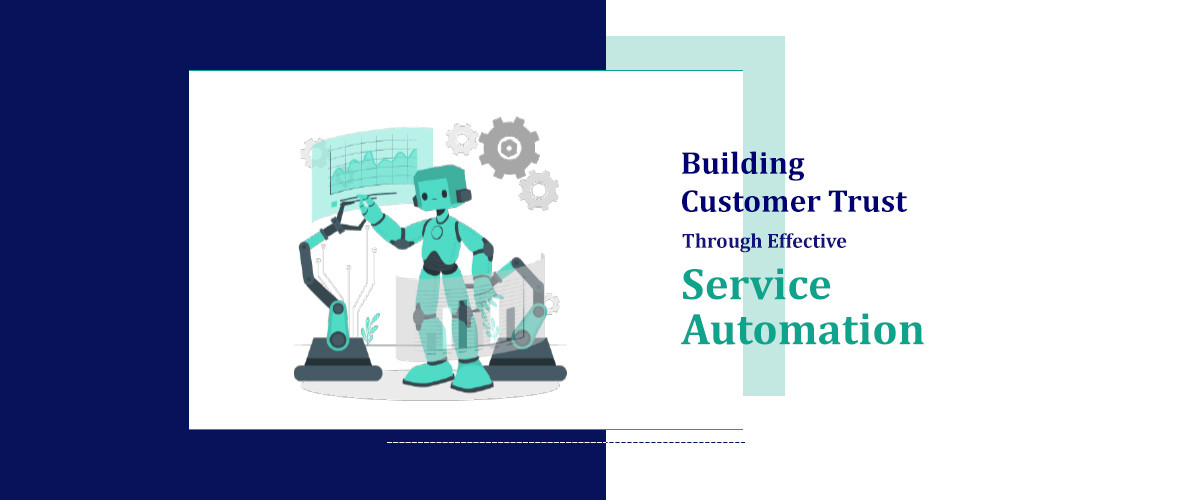What we'll cover
With unmatched convenience, limitless product possibilities, and the opportunity to purchase anything from the comfort of home, e-commerce has transformed the way we buy. With this convenience, however, there is more chance of online fraud and scamming. From phishing emails to phony internet storefronts, fraudsters have evolved in their strategies. This book will lead you through the most often occurring e-commerce frauds and provide doable advice for personal protection.
Recognising E-Commerce Scams and Theft
-
What is an E-Commerce Scam?
Any dishonest plan carried out via the internet aiming at online buyers or sellers is an e-commerce software fraud. These frauds seek to use dishonest means to pilfer personal data, financial information, or money.
-
Differences Between E-Commerce Fraud and Traditional Fraud
While e-commerce tools fraud incorporates more technical techniques, including building false websites, sending phishing emails, or employing malware to get sensitive data, traditional fraud usually results from direct physical or financial dishonesty.
-
Why E-Commerce Fraud is Increasing
More consumers are susceptible to frauds as internet buying grows quickly. Using cutting-edge technology such as phishing assaults, counterfeit websites, and bogus reviews to fool even the most wary customers, scammers are always changing their methods.
Types of Common E-Commerce Scams to Watch for Fake Online Stores
E-commerce Swindle Making a fake internet shop seeming real but intended to take your money is one of the most often used scams.
1. Characteristics of Counterfeit Websites
-
Very low consumer pricing for goods.
-
Bad grammar and design faults.
-
Either merely a generic email address or no contact details.
-
Either a dearth of customer reviews or an excess of dubiously favorable ones.
2. How to Verify Store Authenticity
-
Watch the domain name thoroughly for misspellings.
-
To guarantee a safe connection, find the "HTTPS" and a padlock symbol in the URL.
-
Look up the shop on outside review sites.
3. Phishing Attacks
Phishing is the dishonest act of fraudsters sending false emails or messages posing themselves as reputable businesses in order to pilfer your personal data.
Identifying Phishing Emails and Fraudulent Links
-
Emails requesting credit card numbers or personal information like passwords.
-
Bad spelling, punctuation, and generic greetings like "Dear customer."
-
Hover across links to see their real URL before clicking.
Real-Life Examples of Phishing Scams in E-Commerce
-
Fake emails requesting payment or verification of account data from well-known internet sites such as Amazon or eBay.
-
Links guiding you to look-alike websites meant to pilfer your login credentials.
4. Payment Fraud
Payment fraud is the use of stolen payment data or deceive vendors into taking fake payments by con artists.
5. Using Secure Payment Gateways to Reduce Risk
Always make reliable payments using credit cards with fraud protection or PayPal. Steer clear of straight bank transactions and wire money to unknown vendors.
6. Non-Delivery or Fake Product Scams
This fraud consists of paying for something that never shows up or providing something noticeably different from what was promoted.
7. How to Use Seller Tracking Systems and Delivery Confirmation
-
Make use of systems providing evidence of delivery and shipment tracking.
-
Before you buy, always check the seller's customer reviews and record.
8. Overpayment Frauds
Usually losing both the goods and money, sellers are requested to return the difference even if they may get more money than the agreed amount.
9. Fake Giveaways or Lotteries
Fake competitions or giveaways presented by scammers call for personal information or cash to claim the "prize."
10. Avoiding Social Media Scams
Many con artists advertise bogus goods or websites on social media.
11. How Social Media Scammers Operate
-
To entice victims, scammers run sponsored postings, bogus prizes, or adverts.
-
Many times, they construct false influencer accounts or pose as respectable businesses.
12. How to Spot and Avoid Social Media Scams
-
Deals pushed by social media marketing should be watched carefully.
-
Steer clear of clicking on advertisements from unreliable sources.
-
Before making purchases on social media, research any business or commodity.
Strategies for Avoiding E-Commerce Scams
-
Shop Only Using Reputable Websites: Following reliable websites helps one stay away from being a victim of online fraud.
-
Look for Secure Connections (HTTPS) : Make sure that the website uses a safe, encrypted connection—HTTPS. The URL's padlock symbol is a good indication the website is safe.
-
Be Cautious of Too-Good-To-Be-True Deals: A product can be a fraud if its pricing looks too cheap. Deep discounts entice victims into pilfering their money or data.
-
Avoid Clicking Suspicious Ads or Pop-Ups: Suspected-looking links or pop-up adverts may sometimes direct you to phony websites or cause virus downloads. Use ad-blockers always to avoid these traps.
Using a VPN for Safe Online Shopping
1. What is a Virtual Private Network & How Does this Service Work?
While shopping online, a Virtual Private Network (VPN) hides your IP address and encrypts your internet connection, therefore offering an additional degree of protection.
2. Advantages of Shopping Online With a VPN Service
-
Stops hackers—especially on public Wi-Fi—from snatching your private information.
-
Guards your location and identity, thereby maintaining your private purchasing practices.
-
DNS Ad Blocker: Some VPNs offer a DNS ad blocker feature that prevents intrusive ads and malicious websites by filtering requests through secure DNS servers. This further enhances your browsing experience by reducing exposure to harmful content.
3. Choosing the Right VPN Service
Search among VPN companies for those with:
-
No-log rules guaranteeing they won't monitor your internet use.
-
Excellent encryption guidelines (like AES-256).
-
many server sites for adaptability and quick responsiveness.
4. Suggested VPNs for Security and Personal Privacy
-
Windscribe VPN
-
NordVPN
-
Explicit VPN
Ensuring Your Personal Data
1. Creating Strong, Original Passwords for Every Account
To reduce the danger should one account be hacked, use unique passwords for every site. Strong passwords may be generated and stored with aid from password managers such as Dashlane or LastPass.
2. Enable Two-Factor Authentication (2FA)
By requiring both your password and a second verification action—such as a code sent to your phone—2FA provides an additional degree of protection.
3. Prevent Oversharing Personal Information
Share only the bare minimum required information for purchases. Social engineering methods are used by scammers often to get personal information and then use it in next fraud efforts.
Secure Payment Methods for Online Shopping
1. Why Credit Cards and Digital Wallets are Safer
Digital wallets like PayPal and credit cards provide fraud prevention, therefore simplifying the dispute of charges for fraudulent transactions.
2. Avoiding Direct Bank Transfers and Money Wiring
Since they are more difficult to track and recover from should you become a victim of a fraud, direct bank transfers carry more risk.
3. Setting Up Alerts for Unusual Activity
To be notified of any unusual behavior in your accounts, set up alerts with your credit card provider or bank.
Identifying and Avoiding of Malware Attacks and Phishing
1. How Phishing Works
Acting as a reputable business fools you into disclosing personal and financial information.
2. How to Spot Phishing Attempts
-
Search for strange email addresses and bad grammar.
-
Take care not to rush your "act now."
3. Using Anti-Malware Software
Update anti-malware programs often to keep your devices safe and stop hostile assaults.
What to Do If You've Been Scammed
1. Immediate Steps to Take
Reverse illegal transactions by calling your payment processing or bank.
Safe your accounts by changing your passwords.
2. Reporting the Scam to Authorities
Tell local law enforcement and internet fraud authorities about the scam. You may also let the site where the fraud took place, like eBay or Amazon, be aware.
3. Learn from the Experience
Change your internet behavior using your experience. Share your experience with others to help stop frauds going forward.
Protecting Yourself While Shopping on Mobile Devices
1. Mobile Security Best Practices
Keep your operating system and applications current always.
Replace mobile browsers with shopping applications from reliable stores.
2. Mobile Security Best Practices
Public Wi-Fi is dangerous by nature as hackers could access your information. Shopping on public networks always uses a VPN to guarantee your connection is safe.
Avoiding Fake Reviews and Sellers
1. Spotting Real Reviews
Discover how to recognize phony reviews. Generic or too optimistic evaluations should raise some questions.
2. Researching Sellers Before Making Purchases
Review the seller's history, ratings, and comments. Make sure you're working with a reputable company by using websites like Trustpilot or the Better Business Bureau.
Tools and Resources to Keep Safe from Deceptions
1. Browser Extensions for Secure Shopping
Install AdBlock and HTTPS Everywhere to spot phony websites and stop fraud.
2. VPN Extensions for Extra Security
Add a VPN extension to Chrome, such as NordVPN or ExpressVPN, to encrypt your traffic and protect your data from hackers, especially on public Wi-Fi.
3. Security Apps for Online Shopping
Online purchasing may let you find possible hazards with apps like Norton Mobile Security and McAfee Security.
Conclusion
Stay alert and learn about fresh scams to keep safe shopping online. To safeguard yourself use VPNs, strong passwords, and safe payment methods. Following these best standards will help you to enjoy the ease of e-commerce without becoming a victim of fraud.




